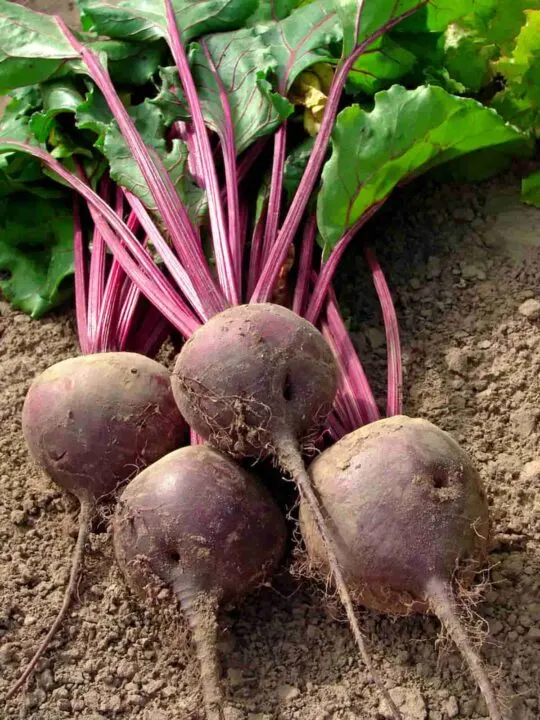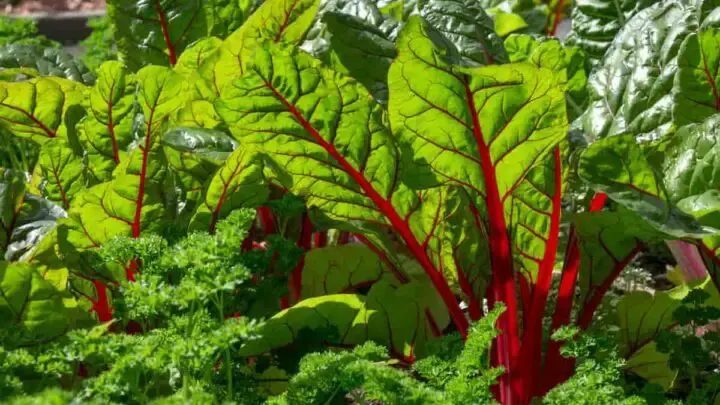Beets are the beloved vegetable of some gardeners and a delicious challenge for others. These root vegetables might seem easy to grow at first, but if you’ve ever bitten into a rough and fibrous beet, you know how tricky it can be to really get them right.
Beets aren’t necessarily supposed to be soft vegetables, but they shouldn’t be hard and woody, either. Unfortunately, there are a lot of things that can go wrong in your garden and lead to fibrous, hard-to-eat beets.
Don’t despair if you’re dealing with fibrous beets. Chances are you’ll be able to correct the problem next growing season after reading this guide. In the meantime, consider canning or baking your beets to help improve the texture of this year’s harvest!

What Makes Beets Fibrous?
The short answer to what makes beets fibrous is two things: stress and time.
A stressed beet is more likely to be woody and fibrous and likely won’t develop as much sugar or other nutrients, which can leave them rather dull and tasteless.
A beet that’s been in the ground for too long is likely to get larger than standard. That wouldn’t be a problem, except that larger beets don’t generally have correspondingly larger concentrations of sugar, and they also tend to get more fibrous.
Leaving beets in the ground to get larger ones might seem like a good thing at first, but generally, you get tougher, more bitter vegetables when you do.
Let’s talk about stress first. What stresses beets, and why does that lead to a tougher, more fibrous harvest?
Not Watering Enough
Like many garden vegetables, beets need a fair amount of water to stay healthy and produce more of their flavorful compounds.
Especially if you have a dry season or live somewhere that’s a little drier than beets prefer, it’s important to ensure you’re watering your garden regularly and offering plenty of supplemental water between rain.
You should provide enough water to keep the soil around your beets moist but not so wet that it encourages root rot. Just as important, you need to water consistently. Beets do best from highly consistent growing conditions.

Too Much Heat
Heat waves are becoming more and more of a problem for beet growers because the plants will naturally develop tougher roots during heat waves. They’re also more susceptible to disease when stressed from the heat.
If you live in a very warm climate or are dealing with a particularly warm summer, it’s a good idea to use a sun shade to give your beets at least partial shade during the heat of the day. That will help keep them healthier, less stressed, and growing normally.
Too Much Shade
Too much shade can be as much of a problem for beets as too much heat or too little water. Generally, beets are happiest in full sun or partial shade only in areas that are too warm for them through their growing season.
Grow lights can help supplement sunlight if you accidentally planted somewhere that is too dark for your beets, but they can only help so much.
It’s best to relocate your beet garden bed if it has a history of having too much shade.
Overcrowding
Planting beets too close together can lead to more competition for water and nutrients, often leading to smaller, more fibrous, and less flavorful beets!
Beets do best with 12-18 inches of space when planted outside and at least 3-4 inches between plants in containers.

Under Fertilizing
Like all plants, beets need nutrients to help them grow and produce all the lovely flavors we love in our harvested vegetables.
Giving your beets too much fertilizer can cause other problems, like root damage and burns, but giving them too little fertilizer can make them start prepping for winter and turning fibrous earlier than they should.
What Happens When You Leave Beets In The Ground Too Long?
Time is probably the most common cause of fibrous beets, and it has everything to do with the natural lifecycle beets go through.
Beets normally have a biannual life cycle. That means that their roots need to harden and prepare for the winter if they’re going to survive to the second year to produce flowers and seeds to propagate.
Unless you’re planting your beets for seeds, though, you want to harvest long before these vegetables are ready to flower and go to seed.
You see, we prefer beets in their most flavorful phase, when they’re firm but cook to an easily chewed texture and have a ton of sugar and nutrients stored in the root.
But beets only stay that way when they’re relatively young. Older beet plants start changing how they’re growing and what they’re producing, starting to create more fibrous roots that can store sugars and nutrients safely overwinter.
Those extra fibers might be perfect for getting a beet plant through the winter freeze, but it isn’t great if you want to eat the beets!
So, keep beet plants alive for two years to get fresh seeds, and harvest summer and autumn beets in their first year of growth for tender and delicious vegetables.

How Do You Know When Your Beets Are Ready To Harvest?
Knowing when to harvest your beets can be tricky because you can’t exactly see the beet growing underground to know when it’s the right size, firmness, and color.
But, there are a few tricks.
The first is to pay attention to the variety you plant and how long they’re supposed to grow. Cold beets grow more slowly, so if you live somewhere that’s a little too cold or have a cold snap in the middle of the growing season, add a few days to their anticipated growing times.
The opposite is also true to some extent. Hot beets may grow a little faster as long as they don’t get stressed. Stressed beets might not grow their roots at all, leading to smaller and less flavorful beets when you harvest.
How do you get around those problems? Check your beets the whole week that they should be ready to harvest. Look around the base of the plants to see if the root is crowning. If you can see a crowning root, your beets are flavorful and ready to harvest.
Every variety will grow at a different rate, and beets planted at different times of the year will harvest at different times.
Consider planting beets 2-3 times each growing season to extend your harvest and take advantage of the different traits of each type of beet.
Happy planting!

Hi there, my name is Allie and welcome to my blog; GareningWithAllie!
Much of what you see written here is just our personal experiences with gardening. Along with the content I write here, there is also a unique collection of gardening topics covered by some of our close friends. I hope you find everything you read here to be helpful, informative, and something that can make your gardening journey the most lovely experience ever! With that said, Happy Gardening!
